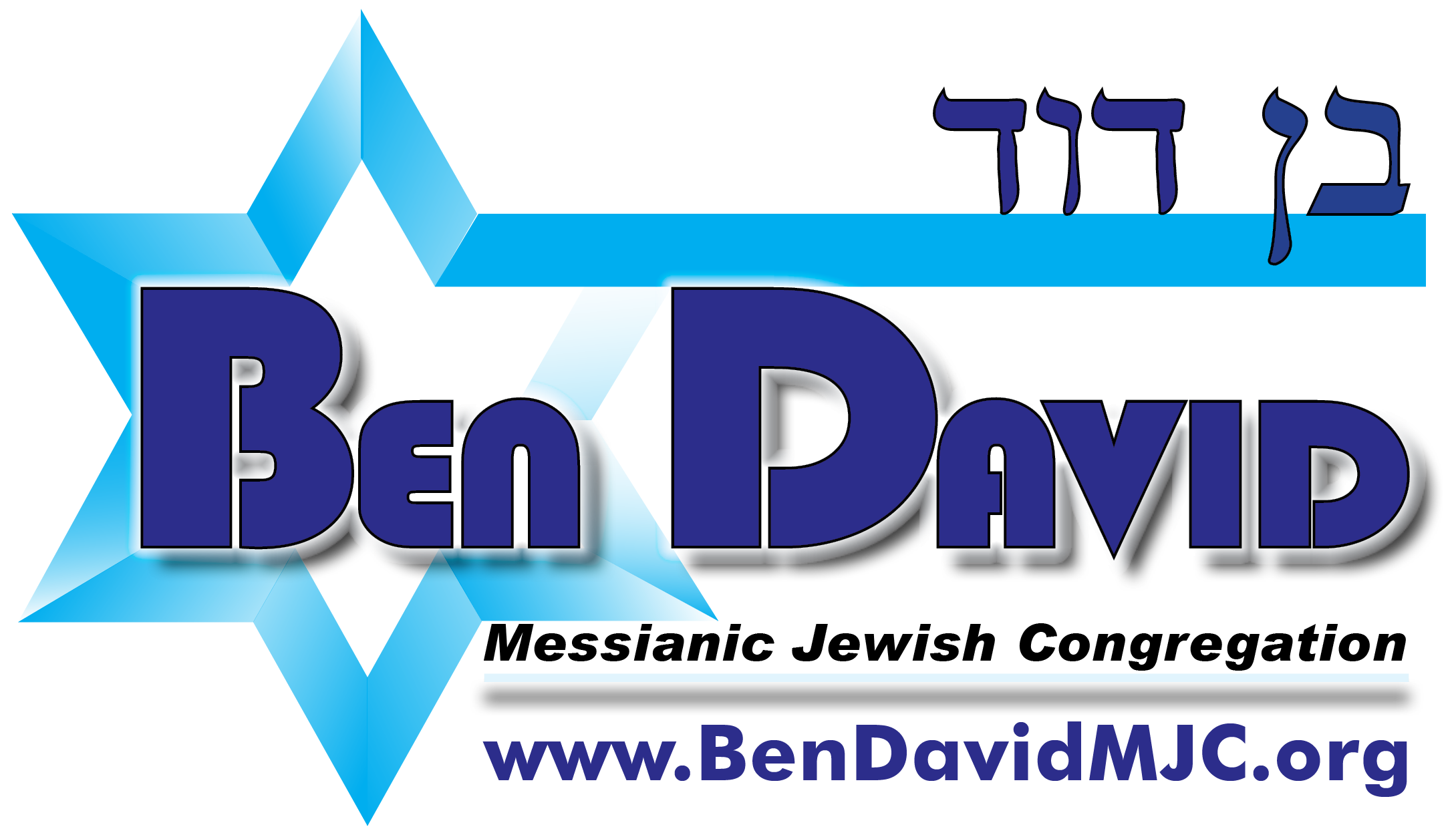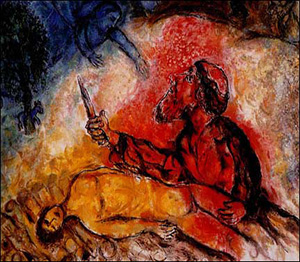Torah: Vayikra 16:1 – 18:30; Haftarah: Amos 9:7-15
Yeshua our Korban
On the first Shabbat after Passover Festival, it is customary to start the reading of Pirkei Avot, one chapter a week, repeating it until Rosh haShanah. Pirkei Avot, or "The Saying of the Fathers" is a collection of rabbinical wisdom from the Talmud and has six short chapters.
Another tradition in the Orthodox community is a fast called "Behab," in which they fast for three days, on Monday, Thursday, and Monday following the first Shabbat after the Festival. That is because this period of holiday rejoicing is more than a week and therefore, one can easily slip from spiritual celebration to frivolity. To atone for this lapse, three days are set aside for repentance and soul searching with Selichot prayers.
Continuing the Torah reading from before Passover, after the death of the two sons of Aaron, God instructs Moshe how to atone for sins by introducing the Yom Kippurim service. Less than forty days after Israel received the Torah at Mount Sinai, the nation toppled from its spiritual high point by the golden calf incident. Moshe’s process of seeking forgiveness for his people lasted for another forty days and ended on the tenth of Tishrei the seventh month of the biblical calendar, when he came back from Mount Sinai with the Second Tablets of the Torah. That day became Yom Kippurim, the Day of Atonements. When the Temple stood, the centerpiece of Yom Kippurim was the special service performed by the Kohen Gadol, the high priest. Only on Yom Kippur the Kohen Gadol was allowed to enter haKodesh, the Holy of Holies, and even then not at all times of the day but only when he carried out the sacrificial service outlined in this Parashah.
This service parallels the atoning sacrifice of Yeshua.
Torah, Vayikra 16:2-18: “And the LORD said to Moshe, Speak to Aharon your brother, that he come not at all times into haKodesh (the holy place) inside the parokhet (veil) before the covering which is upon the ark; that he not die; for I will appear in the cloud upon the covering. Thus, shall Aharon come into haKodesh, with a young bull for a sin offering, and a ram for a burnt offering. He shall put on the holy linen coat, and he shall have the linen breeches upon his flesh, and shall be girded with a linen girdle, and with the linen miter shall he be attired; these are holy garments; therefore, he shall wash his flesh in water, and so put them on. And he shall take from the congregation of the people of Israel two kids of the goats for a sin offering, and one ram for a burnt offering. And Aharon shall offer his bull of the sin offering, which is for himself, and make atonement for himself and for his house. And he shall take the two goats and present them before the LORD at the door of the Tent of Meeting. And Aharon shall cast lots upon the two goats; one lot for the LORD, and the other lot for Azazel. And Aharon shall bring the goat upon which the LORD’s lot fell, and offer him for a sin offering. But the goat, on which the lot fell to be for Azazel, shall be presented alive before the LORD, to make atonement with him, and to let him go as Azazel into the wilderness.”
The Kohen Gadol had two sets of vestments: one was called golden vestments, and the second set was called white vestments. In the haKodesh he was not to be attired in his golden vestments which he was to wear for “splendor and distinction,” but in simple garments of white linen, the symbol of the lowliness and purity of thought, thus the custom, even today, to wear a white kittel on Yom Kippurim. But the rabbis have an additional reason for this custom. When Israel appears before God, it is as if going to a marriage feast before a groom, for Israel is called the wife of God. “For your husband is your Maker, Whose name is the LORD of Hosts; and your Redeemer is the Holy One of Israel, Who is called the God of all the earth. For the LORD has called you, like a wife forsaken and grieved in spirit, even like a wife of [one's] youth when she is rejected," says your God” - Yeshayahu 54:5,6.
The Kohen Gadol gained atonement for the congregation of Israel through the sacrifice of two identical animals - two he-goats, one for the blood offering and the second for the confession of sin. First in service came the blood offering of the first goat. The atonement was effected by the blood sacrifice and not by the confession, but the confession was an essential part of repentance. This clearly parallels the atoning sacrifice of Yeshua. His shed blood is the only insurer of salvation and not anything that we do, including our confession of sins even though the confession is an essential part. Because the confession comes as a result of the convicting work of Yeshua’s shed blood.
Therefore, we can rest assure that our salvation is in the loving hands of Yeshua who lost no one that came to Him. But, given that assurance, a new beginning is not possible unless the sinner has repented by confronting his sins, acknowledge them, and sincerely resolve to change. Confession is not a recitation of a formula – a sinner’s prayer – but a sincere declaration of remorse. God is always willing to meet us more than halfway but only if we turn toward Him. God’s gift of salvation permits us to be aware of sin, but it is up to us to acknowledge it and repent of it. God’s gift also enables the erasing of the past sins and making us a new creation born anew from the inside which will eventually be reflected on the outside. For the apostle entreats us in Romans 12:2: “do not be conformed to this world, but be transformed by the renewing of your mind, so that you may prove what the will of God is, that which is good and acceptable and perfect.”
The second goat, the Azazel, was to be pushed over a cliff in the desert. This would symbolize the bearer of all the people’s sins. The Kohen Gadol would tie a red woolen strip to the head of the goat for Azazel. When this goat was pushed over the precipice, the red wool would miraculously turn white, to symbolize that Israel’s sins had been forgiven. But, in an interesting passage in the Talmud - Mas. Yoma 39b - the rabbis taught: "During the last forty years before the destruction of the Temple the lot [for the Lord] did not come up in the right hand; nor did the crimson-colored strap become white..."
Were sins not able to be forgiven in this period from forty years before the destruction of the Temple until the present time? Was God’s commandment annulled? Or was there an event, around 30 CE, which fulfilled all God’s requirements for the forgiveness of sin?
Indeed all these sacrifices that the Torah speaks about are images and shadows of Yeshua’s substitutionary sacrifice on the cross. For we read in the Brit Chadashah in Hebrews 10 :1-24: “For the Torah, since it is only a shadow of the good things to come and is not the actual things, can never by the same yearly sacrifices, which they offer continually, make whole those drawing near. Otherwise, would these sacrifices not have stopped being offered, because the worshipers, having experienced cleansing even once, would no longer have had consciousness of sin? But by those sacrifices there is a reminder of sins year after year. For it is impossible for the blood of bulls and goats to take away sins. Therefore, when He comes into the world, He says “Sacrifice and offering You did not desire but a body You prepared for Me; burnt offering and sin offering You have not desired. Then I said, `Look, I have come - it is written about Me in the scroll - I desire to do Your will, O God.’
”When He said above, “Sacrifices and offerings You have not desired, nor have You taken pleasure in them” (these are offered according to the Torah), then He said, “I have come to do Your will." He takes away the first in order to establish the second. And it is by this will that we will have been sanctified through the korban (offering) of the body of Yeshua haMoshiach, once and for all. And every kohen stands daily ministering and offering again and again the same korbanot that can never take away sins; but He, having offered up one korban for sins for all time, “Sat down at the right hand of God” waiting from that time onward until “His enemies be made a footstool for His feet.” For by one korban He has perfected forever the ones being set apart as kedoshim... Now where there is forgiveness for these things, there is no longer a korban for sins. Therefore, brethren, having confidence for entering into the haKodesh by the blood of Yeshua, which He opened for us, through the parokhet, that is to say, the parokhet of His body. And since we have a Kohen Gadol over the house of the LORD, let us draw near to the LORD with a sincere heart, with full assurance of faith, our hearts having been sprinkled clean from an evil conscience and our bodies washed with pure water. Let us, without wavering, hold firmly to the Ani Ma'amin (confession) of our Hope, for the One having given the promise is faithful. And let us consider how to stimulate one another to love and mitzvoth.”
His sacrifice fulfilled and replaced them all. Not only is it all sufficient to forgive sin, but it is the only sacrifice that can remove the guilt of sin once and for all. With the advent of Moshiach the Mosaic system of sacrifice was over, His shed blood substituted that of bulls and goats. But, since God’s commandments cannot be annulled, the requirement for removing of sin remains - a blood sacrifice must be made except that He provided the perfect sacrifice around 30CE, therefore, there is no need for a crimson-colored strap to tell that God accepted the sacrifice and forgave our sins. The only thing that remains for us is to believe and come to Him with a sincere confession of sins and a repentant heart.
Shabbat joy, peace, and blessings! Shabbat Shalom!



